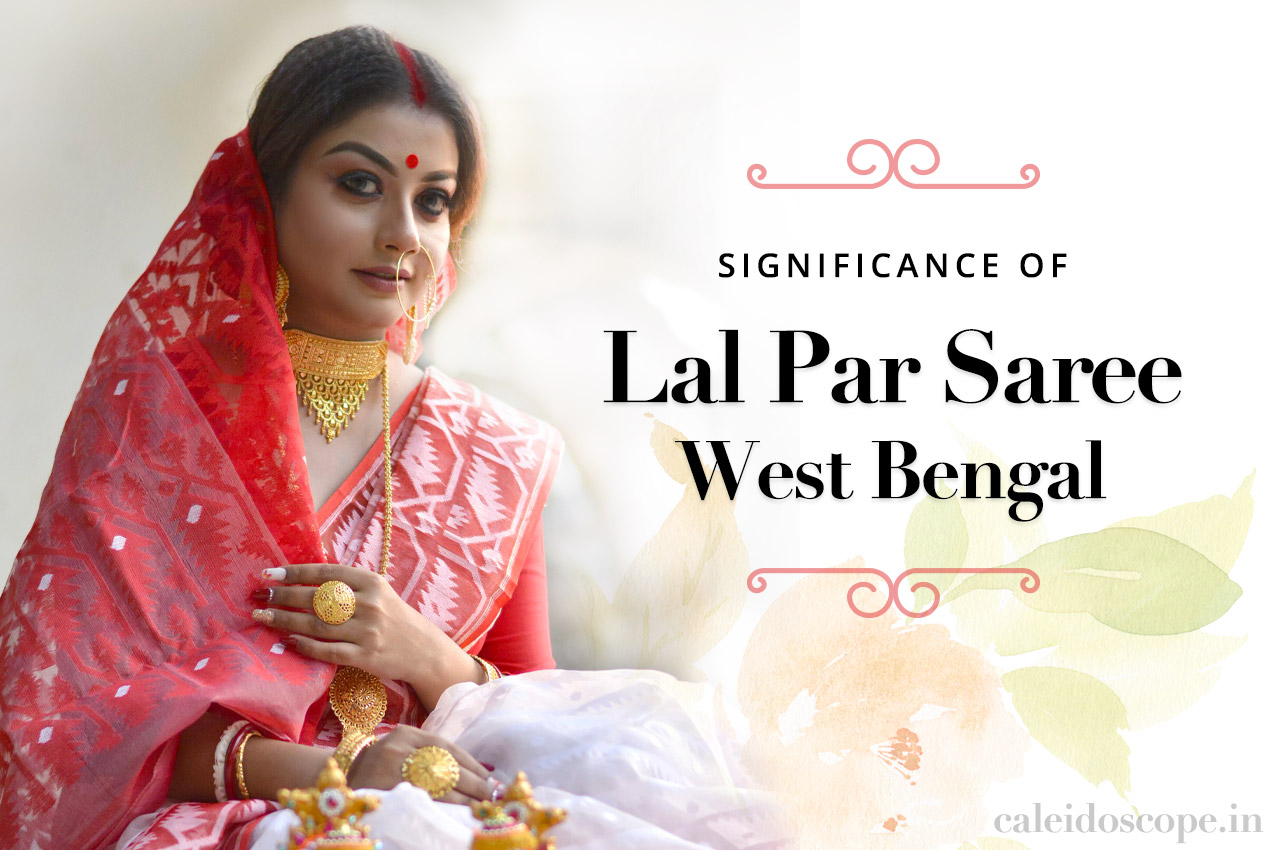
Nothing is more lovely or appealing than a traditional Indian saree, no matter how modern or westernized our country grows. Indian attire has long been associated with elegance, modesty, and grace. And with good reason! We have dozens of distinct sarees and even more ways to drape them because to our country’s diverse culture. Durga Puja is approaching, and it is the most important occasion for Bengalis to dress up in their best attire. This pujo is associated with the lal par sada sari, which is a prominent attraction of the event and is worn by practically every Bengali woman.
Suggested Read – Culture of West Bengal – Exploring the Rich Tradition, Art, Music, Food and Festivals
What is the significance of red and white?

Bengali women regard the colour combination of red and white to be particularly auspicious. White represents purity, while red represents her fertility. A married woman’s preferred outfit for devotional gatherings, religious rituals, and commemorative functions is a white or off-white saree with a red border and pallav. These sarees are frequently adorned with white conch shell bangles (known as “shakha”) and red coral bangles (known as “pola”), as well as crimson sindoor on the forehead, all of which are indicators of her marital status.
Red and white sarees come in a variety of colours and patterns:

Tant sarees: In this combination, the sarees typically have a white or off-white cotton foundation, a red border with gold zari work, an artistic pallav, and little red patterns sprinkled across the entire body.
Jamdani sarees have a sheer white cotton or silk-cotton basis with fine red motifs woven all over the body for a spectacular finish. Traditional themes range from simple polkas to more intricate paisley and floral designs.
Garad and Garad-Korial: The garad saree has a plain white silk foundation with a large crimson border and a striped pallav. Striped borders and little red motifs woven across the white foundation of the saree are common variations. Garad-korial sarees are more ornate, with intricate designs woven into the body and pallav in red or gold. Garad sarees are made of exceedingly fine silk with a papery feel.

Tussar: Tussar silk sarees have a golden gloss and a beige or off-white foundation. The pallav contains beautifully woven red designs, and the borders are crimson or red-gold. Traditional tussar silk sarees include patterns that are very similar to tant sarees.
Muslin sarees are finer and more exotic variations of jamdani sarees. The saree’s white foundation is exceedingly light and sheer, and it’s embellished with fine crimson weavings for a sumptuous look.
Korial-Banarasi: These are sumptuous silk sarees with a velvety white or off-white foundation with magnificent gold/silver decorations on the red border and pallav, which are typical of Banarasi silks.

Baluchari: Baluchari silk sarees in red and white are really beautiful to drape and look at. Red designs illustrating tales from epics and religious literature cover the borders and pallav in meticulous detail. The creamy white background enhances the beautiful borders, which are sometimes woven with subtle red designs. A splash of gold zari among the red weavings might add to its opulence.
Red-and-white sarees come in a variety of textures and price points. The most basic cotton sarees cost a few hundred rupees, while the most beautiful silks might cost several thousands. One might select an acceptable saree based on their budget, personal preferences, and the significance of the event for which they intend to wear it.





